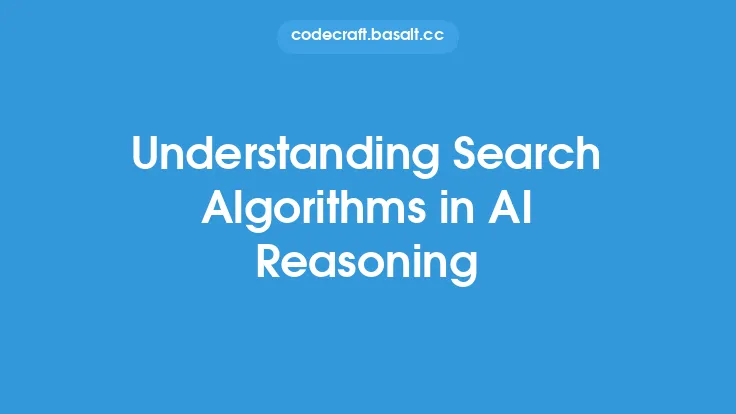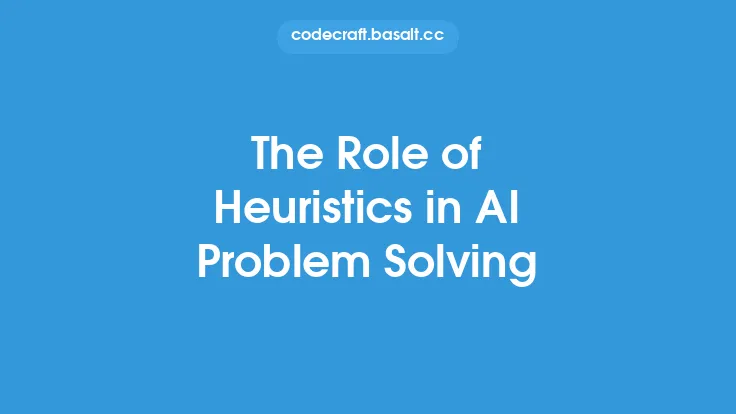In the realm of artificial intelligence, reasoning and problem-solving are crucial components that enable machines to make informed decisions, draw conclusions, and navigate complex situations. At the heart of these capabilities lies a fundamental trade-off: efficiency versus optimality. This trade-off is a recurring theme in AI research, as developers and researchers strive to create systems that can balance the need for swift decision-making with the desire for optimal solutions.
Introduction to the Trade-off
The trade-off between efficiency and optimality in AI reasoning arises from the inherent complexity of many real-world problems. On one hand, optimal solutions often require exhaustive searches or computations, which can be time-consuming and resource-intensive. On the other hand, efficient solutions may sacrifice some degree of optimality in favor of speed and practicality. This dichotomy is particularly pronounced in areas like planning, decision-making, and problem-solving, where the stakes can be high and the consequences of suboptimal decisions significant.
Efficiency in AI Reasoning
Efficiency in AI reasoning refers to the ability of a system to arrive at a solution quickly, using minimal computational resources. This is often achieved through the use of heuristics, approximation algorithms, or other techniques that sacrifice some degree of optimality in favor of speed. Efficient AI systems are particularly useful in applications where time is of the essence, such as real-time control systems, autonomous vehicles, or emergency response systems. In these contexts, the ability to make rapid decisions can be more important than finding the absolute optimal solution.
Optimality in AI Reasoning
Optimality, on the other hand, refers to the ability of a system to find the best possible solution to a problem, given the available information and constraints. Optimal solutions are often desirable in applications where the stakes are high, such as financial planning, logistics, or critical infrastructure management. In these contexts, the consequences of suboptimal decisions can be severe, and the extra computational effort required to find an optimal solution may be well worth it.
Theoretical Foundations
The trade-off between efficiency and optimality has its roots in theoretical computer science, particularly in the study of computational complexity. Theoretical models like the Turing machine and the concept of NP-completeness provide a framework for understanding the fundamental limits of efficient computation. These models show that many problems of interest in AI are inherently difficult to solve optimally, and that efficient solutions often require approximations or heuristics.
Practical Implications
The practical implications of the efficiency-optimality trade-off are far-reaching. In many applications, AI systems must navigate complex, dynamic environments, where the optimal solution may change rapidly over time. In such cases, efficient systems that can adapt quickly to changing circumstances may be more effective than optimal systems that are slow to respond. Conversely, in applications where the environment is relatively static, optimal solutions may be more desirable, even if they require more computational effort.
Techniques for Balancing Efficiency and Optimality
Several techniques have been developed to balance the trade-off between efficiency and optimality in AI reasoning. These include:
- Anytime algorithms: These algorithms can produce a solution at any point in time, with the quality of the solution improving as more time is allocated.
- Approximation algorithms: These algorithms provide a guarantee on the quality of the solution, often in terms of a bound on the deviation from optimality.
- Heuristics: These are techniques that use domain-specific knowledge or intuition to guide the search for a solution.
- Meta-heuristics: These are high-level algorithms that use heuristics to search for a solution, often in combination with other techniques like local search or simulated annealing.
Real-World Applications
The trade-off between efficiency and optimality has significant implications for real-world applications of AI. For example:
- Autonomous vehicles: These systems must balance the need for efficient decision-making with the need for optimal safety and route planning.
- Financial planning: AI systems used in financial planning must balance the need for efficient computation with the need for optimal investment strategies.
- Logistics and supply chain management: AI systems used in these applications must balance the need for efficient routing and scheduling with the need for optimal inventory management and resource allocation.
Future Directions
As AI continues to evolve and improve, the trade-off between efficiency and optimality will remain a critical challenge. Future research directions may include:
- Developing more efficient algorithms: Researchers may focus on developing algorithms that can solve complex problems more efficiently, without sacrificing too much optimality.
- Improving approximation techniques: Researchers may work on improving approximation techniques, such as approximation algorithms and heuristics, to provide better guarantees on the quality of the solution.
- Integrating multiple techniques: Researchers may explore the integration of multiple techniques, such as combining anytime algorithms with approximation algorithms or heuristics, to achieve a better balance between efficiency and optimality.
Conclusion
The trade-off between efficiency and optimality is a fundamental challenge in AI reasoning, with significant implications for real-world applications. By understanding the theoretical foundations of this trade-off, and by developing techniques that balance efficiency and optimality, researchers and developers can create AI systems that are both effective and practical. As AI continues to evolve and improve, the ability to navigate this trade-off will remain a critical component of successful AI systems.





